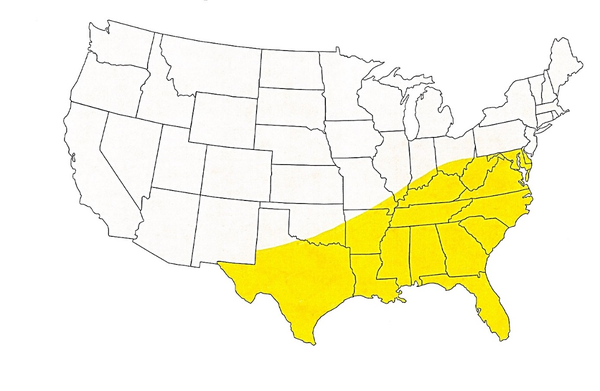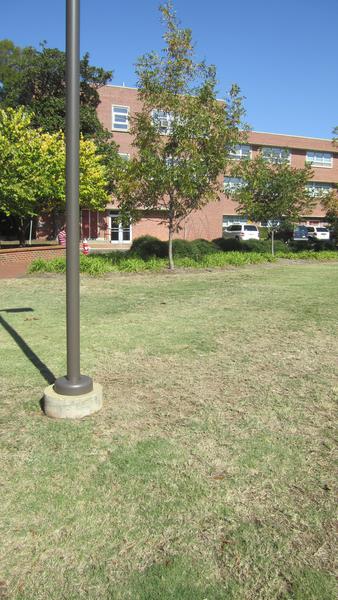Sugarcane Beetles in Turf
en Español / em Português
El inglés es el idioma de control de esta página. En la medida en que haya algún conflicto entre la traducción al inglés y la traducción, el inglés prevalece.
Al hacer clic en el enlace de traducción se activa un servicio de traducción gratuito para convertir la página al español. Al igual que con cualquier traducción por Internet, la conversión no es sensible al contexto y puede que no traduzca el texto en su significado original. NC State Extension no garantiza la exactitud del texto traducido. Por favor, tenga en cuenta que algunas aplicaciones y/o servicios pueden no funcionar como se espera cuando se traducen.
Português
Inglês é o idioma de controle desta página. Na medida que haja algum conflito entre o texto original em Inglês e a tradução, o Inglês prevalece.
Ao clicar no link de tradução, um serviço gratuito de tradução será ativado para converter a página para o Português. Como em qualquer tradução pela internet, a conversão não é sensivel ao contexto e pode não ocorrer a tradução para o significado orginal. O serviço de Extensão da Carolina do Norte (NC State Extension) não garante a exatidão do texto traduzido. Por favor, observe que algumas funções ou serviços podem não funcionar como esperado após a tradução.
English
English is the controlling language of this page. To the extent there is any conflict between the English text and the translation, English controls.
Clicking on the translation link activates a free translation service to convert the page to Spanish. As with any Internet translation, the conversion is not context-sensitive and may not translate the text to its original meaning. NC State Extension does not guarantee the accuracy of the translated text. Please note that some applications and/or services may not function as expected when translated.
Collapse ▲Introduction
The sugarcane beetle, Euetheola rugiceps (LeConte), traditionally a pest of agricultural crops, has become a sporadic, but serious pest of turfgrass on golf courses, athletic fields, home lawns, sod farms, and in pastures. Initially confined to the southeastern United States it has, in recent years, spread as far north as Maryland, west into Texas, and south into Florida (Figure 1).
Description
Sugarcane beetle adults are dull black, approximately 15mm (0.6 in) long and have distinct grooves extending along the length of the abdomen (Figure 2). Larvae are typical, “C-shaped” white grubs with red-orange head capsules. Sugarcane beetle larvae, like other white grubs, can be differentiated from other species by examining the raster (hair) pattern on the underside of the tip of the abdomen. The raster pattern of sugarcane beetle larvae consists of an irregular median double row of bristles, somewhat similar to that of masked chafers. To help distinguish the two, sugarcane beetle larvae will typically be present in the soil earlier in the year (May) than masked chafers. Sugarcane beetle eggs are white, shiny, smooth and approximately 0.75-1.5mm (0.3-0.6in) in width.
Pest Status
Sugarcane beetle infestations have been primarily recorded in both bermudagrass (Cynodon dactylon Linnaeus) and Zoysia grass (Zoysia spp.) although isolated damaging populations have also occurred in established tall fescue. Sugarcane beetle preference for warm- and cool-season turfgrass has been examined and adults appear not to have a significant preference for either so it is possible to have sugarcane beetle adult activity in cool season turf species. Corn and sugarcane were originally thought to be primary hosts, but adult sugarcane beetles have been recovered often in pasture areas and wild fields feeding exclusively on Paspalum spp. grasses, and especially Juncus effuses (Linnaeus).
Biology
Early season adult flight occurs in April and May, with the majority of adults flying the first two weeks of May in North Carolina. Females lay 0-3 eggs a day in the soil and can lay as many as 30-60 eggs in a lifetime. Eggs hatch within 8-10 days, depending on available soil moisture and larvae reach full growth in about two months. Larvae are present in the soil May-August and the next generation of adults begins emergence in September. This adult population is typically much smaller than spring populations and adult flight continues throughout October and November. Once ambient air temperatures decrease below 50°F, adults burrow deeper into the soil to overwinter.
Damage
Injury caused by sugarcane beetles can be seen in turfgrass as early as May and, unlike other white grub species, sugarcane beetles can damage turfgrass both in the larval and adult life stage. In June, July, and August, larvae primarily feed on decaying plant material in the soil but may incidentally feed on turfgrass roots, weakening a turf stand when larval populations are high. April through November, adults cause direct damage to the turfgrass by attacking the stem of the plant at the soil surface and either cut off the stem completely or sever it so that the plant wilts and dies. Indirect damage to the turfgrass may also occur by adult beetles tunneling and burrowing through the soil during the day. This tunneling behavior, approximately 12-50 mm (0.5-2 in) below the soil surface, weakens the plant root system and creates an uneven turf surface. Adult beetles cause the majority of damage following overwintering emergence in April and May and after the fall emergence in late September and early October. Post-emergence, flying sugarcane beetles are attracted to light sources at night. On golf courses and athletic fields, damage tends to be most severe directly underneath a light source and spreads radially from there (Figure 3).
Control
Cultural Control
Cultural practices such as appropriate fertilizer use and infrequent, deep irrigation will result in a vigorous turf stand that is more tolerant of insect pests and may help alleviate some damage issues. Eliminating any unnecessary light sources that may attract adult beetles to the turf area may also be beneficial.
Biological Control
A number of naturally-occurring predators and parasites of sugarcane beetles can help decrease populations but few are available for commercial use. Parasitic flies and wasps will oviposit inside adult beetles so that larvae will consume the insect when eggs hatch. Foraging thief ant populations will feed on eggs in the soil and red imported fire ants may also help reduce egg and larval populations. Sugarcane beetle adults are also susceptible to entomopathogenic fungus infection (Metarhizium anisopliae) and a number of predatory mite species.
Chemical Control
Effective chemical control requires a different approach for sugarcane beetles compared to that of other scarabs (Popillia japonica Newman, Cyclocephala spp., Phyllophaga spp.), where early larval instars are targeted. Unlike other white grub species that overwinter in the larval stage, the sugarcane beetle spends the majority of its life cycle as an adult and management plans for effective control of this insect in North Carolina have targeted adults. Generally, pyrethroids and combination products are more successful at suppressing sugarcane beetle populations but application timing, rather than product selection, is a more important determining factor. Whenever possible, spring-flying adults should be targeted because this population is larger, causes significantly more damage and is more susceptible to pesticide application.
| Insecticide and Formulation | Amount per 1,000 sq ft | Precaution and Remarks |
|---|---|---|
| bifenthrin* (Talstar) F, GC G form also available | 0.5 10 1.0 fl oz | Use GC formulation for golf courses. |
| carbaryl* (Sevin) 80 WSP | 3 oz | |
| chlothianidin + bifenthrin (Aloft) | See label | |
| chlothianidin + bifenthrin (Aloft) GC SC | 0.27 to 0.54 fl oz | |
| chlothianidin + bifenthrin (Aloft) LC SC | 0.27 to 0.54 fl oz | |
| chlothianidin + bifenthrin (Aloft) GC G | 1.8 to 3.6 lb | |
| chlothianidin + bifenthrin (Aloft) LC G | 1.8 to 3.6 lb | |
| clothianidin (Arena) .5G 50 WDG | 14 to 22 oz 0.15 to 0.22 oz | Mole cricket suppression. |
| dinotefuran (Zylam) 20SG | 1 oz per 1000 ft2 |
References
- Biology and chemical ecology of the sugarcane beetle and integrated pest management of sweet potato soil insects in Louisiana. Smith, T. P. 2006. LSU Doctoral Dissertations.
- Sugarcane Beetle | Vol. 3, No. 6. Layton, B. 2017. Mississippi State University Extension.
- 2018 Pest Control for Professional Turfgrass Managers. Bowman, D. et al. 2017. NC State Extension Publication AG-408. 81 pp.
- Extension Plant Pathology Publications and Factsheets
- Horticultural Science Publications
- North Carolina Agricultural Chemicals Manual
For assistance with a specific problem, contact your local Cooperative Extension Center





